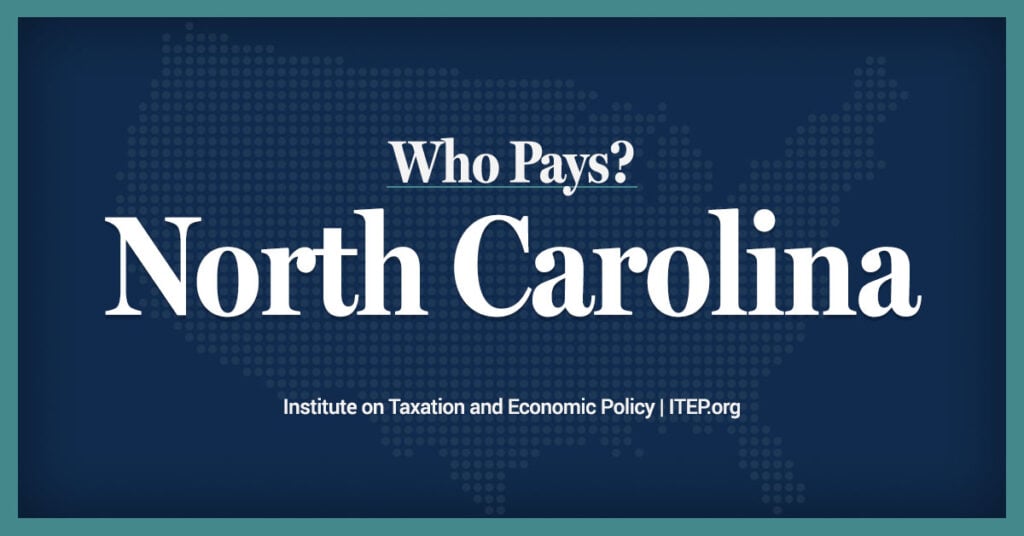(Original Post)
Post on July 19, 2013 by Jeff Shaw5 Comments »
When making important decisions, people have a right to the best possible information. Facts, not ideology, should drive our policy agendas. This is especially true on budget and tax issues, which affect everyone in North Carolina.
Unfortunately, John Hood’s recent column on the NC General Assembly’s tax changes is replete with bad information. Warning: some wonky details follow.
The Budget & Tax Center uses rigorous methods and accurate modeling strategies that are endorsed and used throughout the economic forecasting industry – including by conservative and centrist groups.
Here’s the thing about making tax changes: there will always be winners and losers. That’s why it takes careful thought, engagement of a diverse set of stakeholders and consideration of a range of data points and methods. Efforts to establish a reasonable estimate of what will happen as a result of the plan will always be estimates, but policymakers should have the best information available to them as to the direction and magnitude of the impact of their decision.
In the current tax debate, policymakers had two separate types of analysis at their disposal.
The sample taxpayer scenarios developed by the state’s Fiscal Research Division. This gives examples of how particular taxpayers will fare under tax changes. These can be fine tools, but are inherently limited. They pick out particular taxpayers and can’t show you that everyone – or even most people — will have the same experience. The results can’t be extended to everyone in particular filing types, and certainly not to the population at large.
Using this tool alone, as tax plan backers did, is like trying to fix your car using only a screwdriver. Yet even using this limited tool shows that proponents’ claims that everyone will benefit from tax changes is flatly false. That’s right, according to non-partisan Fiscal Research, and even according to the conservative Tax Foundation, there will be taxpayers who pay more under the tax plan.
The other type of tool that policymakers could use was an economic incidence model, like the kind that the Joint Committee on Taxation uses, that has been developed by the Institute on Taxation and Economic Policy. The Budget & Tax Center used this model to provide population-level estimates of the impact of tax changes. This is a far better tool than the limited sample scenarios, since it provides an overall summary of the experience of all taxpayers.
Analysis showed that the bottom 80 percent of taxpayers would experience a tax increase on average. The findings take into account the rough swap of electricity and natural gas from the gross receipts franchise tax to the sales tax, as well as the privilege tax changes for amusements. The findings take into account a household’s total income in order to reflect ability to pay the tax. The findings also take into account the base broadening of the sales tax.
The model is consistent with real-world experience. First, consumers will pay more indirectly because of changes businesses make to their prices to accommodate for the sales tax changes. The Council on State Taxation — not a group one would call a bastion of progressive views — finds that 40 percent of total sales tax collections are paid by businesses. Second, multi-state, profitable businesses — the bulk of corporate income taxpayers — are going to pass their tax cut on to shareholders, not workers. Those shareholders are very unlikely to all be North Carolinians, meaning that money will flow out of our state.
Record corporate profits have not translated into higher wages for the past thirty years, so why would we assume that a corporate income tax cut is going to all of a sudden give corporations a change of heart and decide to boost their workers’ wages?
In desperation, proponents often turn to the argument that this is going to create jobs. But not only is there no economic consensus that this is a good strategy for growth, states that have tried it have not seen the promised employment expansion – though they have seen high incidence of poverty. We can’t import the oil production capacity of Texas or the coal mines of Tennessee, so why should we import their model that drives poverty through the roof?
When we juxtapose these two decisions — huge tax cuts for the wealthy versus a “just wait, it’ll all work out” message for working families – we can see the human cost of a serious policy mistake. Pretending that economic evidence supports these choices just compounds that serious mistake.
Post on July 19, 2013 by Jeff Shaw5 Comments »
When making important decisions, people have a right to the best possible information. Facts, not ideology, should drive our policy agendas. This is especially true on budget and tax issues, which affect everyone in North Carolina.
Unfortunately, John Hood’s recent column on the NC General Assembly’s tax changes is replete with bad information. Warning: some wonky details follow.
The Budget & Tax Center uses rigorous methods and accurate modeling strategies that are endorsed and used throughout the economic forecasting industry – including by conservative and centrist groups.
Here’s the thing about making tax changes: there will always be winners and losers. That’s why it takes careful thought, engagement of a diverse set of stakeholders and consideration of a range of data points and methods. Efforts to establish a reasonable estimate of what will happen as a result of the plan will always be estimates, but policymakers should have the best information available to them as to the direction and magnitude of the impact of their decision.
In the current tax debate, policymakers had two separate types of analysis at their disposal.
The sample taxpayer scenarios developed by the state’s Fiscal Research Division. This gives examples of how particular taxpayers will fare under tax changes. These can be fine tools, but are inherently limited. They pick out particular taxpayers and can’t show you that everyone – or even most people — will have the same experience. The results can’t be extended to everyone in particular filing types, and certainly not to the population at large.
Using this tool alone, as tax plan backers did, is like trying to fix your car using only a screwdriver. Yet even using this limited tool shows that proponents’ claims that everyone will benefit from tax changes is flatly false. That’s right, according to non-partisan Fiscal Research, and even according to the conservative Tax Foundation, there will be taxpayers who pay more under the tax plan.
The other type of tool that policymakers could use was an economic incidence model, like the kind that the Joint Committee on Taxation uses, that has been developed by the Institute on Taxation and Economic Policy. The Budget & Tax Center used this model to provide population-level estimates of the impact of tax changes. This is a far better tool than the limited sample scenarios, since it provides an overall summary of the experience of all taxpayers.
Analysis showed that the bottom 80 percent of taxpayers would experience a tax increase on average. The findings take into account the rough swap of electricity and natural gas from the gross receipts franchise tax to the sales tax, as well as the privilege tax changes for amusements. The findings take into account a household’s total income in order to reflect ability to pay the tax. The findings also take into account the base broadening of the sales tax.
The model is consistent with real-world experience. First, consumers will pay more indirectly because of changes businesses make to their prices to accommodate for the sales tax changes. The Council on State Taxation — not a group one would call a bastion of progressive views — finds that 40 percent of total sales tax collections are paid by businesses. Second, multi-state, profitable businesses — the bulk of corporate income taxpayers — are going to pass their tax cut on to shareholders, not workers. Those shareholders are very unlikely to all be North Carolinians, meaning that money will flow out of our state.
Record corporate profits have not translated into higher wages for the past thirty years, so why would we assume that a corporate income tax cut is going to all of a sudden give corporations a change of heart and decide to boost their workers’ wages?
In desperation, proponents often turn to the argument that this is going to create jobs. But not only is there no economic consensus that this is a good strategy for growth, states that have tried it have not seen the promised employment expansion – though they have seen high incidence of poverty. We can’t import the oil production capacity of Texas or the coal mines of Tennessee, so why should we import their model that drives poverty through the roof?
When we juxtapose these two decisions — huge tax cuts for the wealthy versus a “just wait, it’ll all work out” message for working families – we can see the human cost of a serious policy mistake. Pretending that economic evidence supports these choices just compounds that serious mistake.




